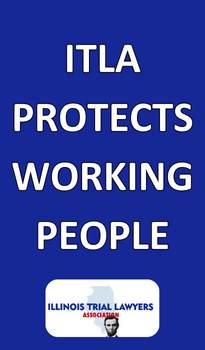Afternoon roundup
Wednesday, May 10, 2023 - Posted by Rich Miller
* Press release…
Governor JB Pritzker was joined today by Lieutenant Governor Julianna Stratton, Illinois State Comptroller Susana A. Mendoza, elected officials, and first responders to sign the Act-of-Duty Bill into law. HB 3162 retroactively provides Chicago police officers and firefighters disability benefits for the time they were unable to serve due to contracting COVID-19 between March 9, 2020, and June 30, 2021.
“Since the darkest days of the pandemic, our first responders — police officers, firefighters, and EMS workers alike — have been on the ground, putting their own health and safety at risk to protect others,” said Governor JB Pritzker. “When our first responders are disabled on the job, they deserve comprehensive benefits. HB 3162, a bipartisan Act-of-Duty Bill, ensures they get the benefits they are entitled to.”
“Our first responders serve and protect, heal and care, comfort and support, Illinois residents in their time of greatest need,” said Lieutenant Governor Juliana Stratton. “During the pandemic they continued to answer the call, many at great cost to themselves and their families. This law will provide them with full disability benefits they deserve for the selfless sacrifice they have made on behalf of the people of Illinois.”
As the COVID-19 pandemic gripped our nation in the early months of 2020, first responders jumped into action assisting the sick, dispersing testing kits, transporting infected patients to the hospital, and more. When officers contracted the virus themselves, even after taking precautions and wearing PPE, they often needed to be hospitalized and many were left without the salary and healthcare coverage they needed. For the past three years, COVID-19 was the leading cause of law enforcement deaths - far surpassing firearm and traffic-related deaths.
“Chicago police and firefighters should not have to die to qualify for full COVID disability benefits. And that was the unfortunate message the city’s pension disability board was sending with its rulings against my brother and Officer Diana Cordova-Nestad – and the other first responders disabled by COVID in the days before vaccines were available who are waiting to go before the board,” Comptroller Susana A. Mendoza said. “That’s unforgivable. I can’t thank everyone enough - my sponsors, Representative Hoffman and Senator Cunningham, legislators, and Governor Pritzker, for fixing this injustice for my brother and all our first responders.”
“Our first responders put their lives on the line to ensure we could rely on emergency services in the darkest days of the pandemic,” Assistant Majority Leader Jay Hoffman (D-Belleville). “The least we can do is make sure they receive the benefits they are rightly owed. I am appreciative of the strong advocacy on this topic from Comptroller Mendoza, first responders and lawmakers on both sides of the aisle.”
“Today, we have taken a significant step towards recognizing the sacrifices of Chicago police and firefighters who have suffered from the long-term effects of COVID-19,” said State Senator Bill Cunningham (D-Chicago). “This action puts Chicago police and fire in parity with the rest of the state by giving them access to the full disability benefits they deserve.”
The Illinois Works Jobs Program Act has already been revised to ensure that families of the COVID-19’s fallen first responders receive their benefits. The Act-of-Duty Bill furthers this initiative, giving those who were disabled due to the virus the benefits that they deserve.
Since the onset of the pandemic, more than 100 million Americans have been infected with COVID-19 and more than one million of those were left with long-term COVID-related disabilities.
“I am proud to stand with Comptroller Mendoza in support of our police officers and firefighters across the state. This legislation provides Chicago police officers and firefighters with the same COVID-19 disability benefits as our officers and firefighters in downstate Illinois,” said Deputy Republican Leader Norine Hammond (R-Macomb). “These brave officers and firefighters who fell ill and were injured in the line of duty deserve our utmost support and with today’s action, they will finally receive the financial support they’ve earned. We cannot thank them enough for their service to the people of Illinois.”
“In the darkest days of the COVID-19 pandemic, our first responders put their lives on the line to ensure the health and safety of our communities. Now when they need us, we need to be there for them,” said Assistant Majority Leader Natalie Manley. “By including the rebuttable presumption for first responders who have become disabled as a result of COVID-19, we are correcting a great injustice and ensuring that our first responders have the resources they need to live fulfilling lives.”
“While most of us were at home during COVID trying to protect ourselves, our police and firemen were in the midst of the virus, serving on the frontlines to serve and protect our communities,” said Senator Dale Fowler (R-Harrisburg). “It’s incredibly important we support them through this legislation, because they are the everyday heroes of our communities, and they shouldn’t have to stress about compensation in an event of a COVID exposure leading to a disability.”
“As a strong advocate for our law enforcement officials, I’m proud to continue supporting them by ensuring they receive the benefits they deserve,” said State Senator Meg Loughran Cappel (D-Shorewood). “We have to continue prioritizing the men and women who protect our communities.”
* This bill has passed both chambers…
To increase the baseline financial penalty for civil rights violations, State Senator Robert Peters championed a measure to create the Civil Rights Remedies Restoration Act.
“Business enterprises receiving federal funds should not be immune to the consequences of discriminating against people,” said Peters (D-Chicago). “Protecting businesses from punishment when they knowingly commit discriminatory acts goes against Illinois values.”
House Bill 2248 was created in response to the 2022 U.S. Supreme Court decision in Cummings v. Premier Rehab Keller, P.L.L.C. that ruled emotional distress damages are not recoverable in a private action under the anti-discrimination provisions of either the Rehabilitation Act of 1973 or the Patient Protection and Affordable Care Act.
The bill would allow state claims for violations of federal civil rights laws to be heard in any court with jurisdiction. It further provides that Illinois courts may award no less than $4,000 in damages or other relief for violations.
“Illinois has maintained the status of being a welcoming state for everyone,” Peters said. “The Civil Rights Remedies Restoration Act will serve as a source of relief for those seeking assistance for emotional distress due to discrimination. Considering previous court rulings that have prevented Illinois courts from intervening, this measure eliminates the red tape and allows victims to pursue financial justice.”
* Press release…
“The American Cancer Society Cancer Action Network (ACS CAN) supports legislation passed today by the Senate that will prohibit the use of e-cigarettes everywhere that smoking is prohibited under the state’s smoke-free law. ACS CAN supports everyone’s right to breathe clean smoke-free air.
“E-cigarettes pose a potential risk to people who do not use them through secondhand exposure to toxicants in the aerosol. Prohibiting the use of e-cigarettes in workplaces, including restaurants, bars and gaming facilities, can protect the public’s health by preventing nonusers from being exposed to nicotine and other potentially harmful chemicals in the aerosol emitted by these products. No one should have to choose between their health and their job.
“ACS CAN commends the General Assembly for passing this important legislation and looks forward to seeing Gov. Pritzker sign it into law.”
* Pitch…
Hello,
Writing to you about an international finance industry-backed bill (HB73) that would do away with portions of consumer protection laws that were recently put in place.
Last year, former Senator Collins, the legal funding industry, and advocacy groups negotiated a bill that gave a regulatory framework with consumer protections to ensure loans cannot be larger than $100k — the Consumer Legal Funding Act (CLFA) was signed into law.
But HB73 wants to do away with portions of that law:
• The bill would add a carveout to the Consumer Legal Funding Act (CLFA) for legal funding greater than $500k
• Under HB 73, the sky’s the limit on the principal amount, finance charges, and fees which could be harmful to consumers
• There is only one known proponent–the International Legal Finance Association. According to a WSJ article, foreign-funded shell companies underwrite many patent-infringement lawsuits against U.S. firms in industries critical to national security.
I wanted to offer you an interview with a rep from Woodstock Institute, an organization that works to advance economic justice and racial equity within financial systems.
* Press release…
The CHANGE Illinois team has successfully pushed legislation through the Illinois General Assembly! Our bill, HB 1496, is designed to fairly and effectively implement the ban on prison gerrymandering to ensure fairer representation for all Illinoisans.
We asked our supporters to take action and send an email to their representatives to call HB 1496 for a Senate floor vote. With your help, we were able to successfully shepherd it through both the Illinois House and Senate and get it one step closer to being signed into law by Gov. JB Pritzker.
* Equality Illinois…
A statement from Myles Brady Davis, Communications Director of Equality Illinois, the state’s civil rights organization for lesbian, gay, bisexual, transgender, and queer (LGBTQ+) Illinoisans:
“We are extremely excited by Clare Killman’s historic inauguration to the Carbondale City Council. Killman is the first Trans person to serve on a city council in Illinois and she is one of only five Trans people now elected to office in Illinois. Killman’s inauguration is impactful for Carbondale, which has become a significant community of safety and refuge in Southern Illinois for folks seeking access to reproductive healthcare and gender-affirming healthcare that is otherwise limited, prohibited, or criminalized in their home states.
“Killman will be a powerful voice for change and will inspire more Trans people to run for office in their communities. We know Trans people remain severely underrepresented in all levels of government. At this time when more than 700 anti-LGBTQ+ bills have been introduced in state capitols across the country in 2023, when the opponents of equality are working hard to take healthcare away from Trans people, when anti-Trans forces have tried to silence an elected Trans state legislator in Montana, we need many more Trans voices in rooms of power. Now more than ever.”
* Isabel’s afternoon roundup…
* Sun-Times | Pritzker signs bill guaranteeing disability pay to first responders who contracted COVID-19: Illinois Comptroller Susana Mendoza’s Chicago cop brother was denied duty disability benefits despite contracting COVID-19 on the job in 2020. Mendoza, who attended Wednesday’s ceremony, wiped away tears as she thanked the governor and others who helped get the bill passed.
* Capitol News Illinois | As the COVID disaster declaration sunsets, Pritzker looks back on how Illinois came through the pandemic: “There are no restrictions,” Pritzker said. “Why was there a disaster declaration? Because in order for us to receive the federal benefits that were being offered to SNAP (Supplemental Nutrition Assistance Program) recipients, who are the poorest people in our state, people who needed Medicaid, who are the poorest people in our state, you needed to match up your disaster declaration and executive orders with the federal government’s executive orders and disaster declaration. So we did that.”
* Patch | No Evidence Pritzker Planned Hinsdale Central Visit: “The District has reviewed its files and has not located any records responsive to your request,” the district’s records officer, Deb Kedrowski, said in a reply.
* Daily Herald | Don’t call her inexperienced: 32-year-old who was on city council sworn in as suburb’s youngest mayor: She was the city’s Ward 7 alderman for the past four years, after she first started showing up to meetings at city hall to get answers about flooding in her west-side neighborhood. She manages a team of financial investigators at CME Group that ensures integrity in the markets. And she just got married and bought a house not too far from where she grew up.
* Tribune | Group of four alleged teen robbers held without bond in slaying of off-duty Officer Aréanah Preston, killed while still in uniform during weekend confrontation: The four appeared for a hearing at the Leighton Criminal Court Building midday Wednesday. Judge David Kelly held the group without bond in front of a packed courtroom with police officers filling the benches and lining the walls.
* WTTW | Former Interim Top Cop Charlie Beck: CPD Needs to Embrace Consent Decree, Brown’s Leadership Came Up Short: “I was under a consent decree in Los Angeles,” said Beck in an interview with WTTW News. “I completed the consent decree while I was chief. And when people asked me what I would change after it was over, I said ‘nothing’ because it’s a road map to excellence. Yes, it’s a heavy lift, but when you’re completed with it, when you’ve done more than check the boxes but actually made the change that it demands, you have a much, much better police agency.”
* Tribune | 53 candidates apply to become next CPD superintendent: Anthony Driver Jr., president of the Community Commission for Public Safety and Accountability, told reporters Wednesday that 53 candidates submitted their materials for consideration before the May 7 deadline. Of those, 32 applicants have current or former ties to the CPD, Driver said.
* WAND | Bill requiring water bottle filling stations heads to Pritzker’s desk: The change would apply to any new public buildings with an occupancy of over 100 people and properties that are 5,000 square feet or larger. State law requires water fountains in public buildings, but Democratic lawmakers say their plan would encourage more people to use their own bottles instead of having more plastic in landfills.
* Crain’s | CME shareholders vote no in droves on executive pay — and nearly oust a director: Holders of less than a third of CME shares, or 91.5 million, voted in favor of the pay practices and package for CEO Terry Duffy and other executives, according to a Securities & Exchange Commission filing today. Charles Carey, chairman of the compensation committee and a member of the Chicago Board of Trade since 1978, got just 54% of the vote to keep him on the board.
* WMAY | Springfield Ald. Shawn Gregory discusses his frustration with moves by the new City Council: Springfield Alderman Shawn Gregory discusses his frustration with the new City Council and some early votes it’s taken against measures important to him and his ward, and why it’s prompted him to suggest the city’s Voting Rights Lawsuit consent decree, ensuring minority representation, may need to be revisited.
* Tribune | Migrating birds set to risk their lives flying over Chicago, most dangerous city for migratory birds in North America: Thousands of birds carpeted the sky last night, according to Annette Prince, director and president of Chicago Bird Collision Monitors, a nonprofit dedicated to the respite and protection of migratory birds through daily rescue efforts, when on Thursday Chicago experienced a drastic shift in wind patterns moving up from the south, prompting waves of birds to pass through downtown looking for green space to settle.
* News-Gazette | Surprise! Champaign teacher honored with state award: Tate “inspires her students through her positivity, belief that any student can learn and her dedication to creating a classroom with a culture of learning,” the Golden Apple Foundation said in Tuesday’s announcement.
* Nerd Wallet | 4 things to know about the latest inflation report: April marked the 10th month in a row of overall inflation decreases. The consumer price index for all items rose 4.9% for the past 12 months throughout April, down from 5% in March. It’s a small decline, but it makes April the lowest annual increase since April 2021. That includes the peak for overall CPI at 9.1% in June 2022.
* Fresh Air | Millions of people have long COVID brain fog — and there’s a shortage of answers: Neuropsychologist James C. Jackson says people with long COVID can suffer from symptoms like exhaustion, shortness of breath and disturbed sleep. Some of the most troubling symptoms are neurological: struggling to remember things, to focus, even to perform basic daily tasks and solve problems.
* WSJ | The Home Buyer’s Quandary: Nobody’s Selling: Many Americans who want to move are trapped in their homes—locked in by low interest rates they can’t afford to give up. These “golden handcuffs” are keeping the supply of homes for sale unusually low and making the market more competitive and pricey than some forecasters expected.
1 Comment  
|
Meanwhile, in Opposite Land…
Wednesday, May 10, 2023 - Posted by Isabel Miller
* Idaho…
A federal judge denied Idaho Attorney General Raúl Labrador’s request to reconsider the order barring the state from prosecuting emergency room physicians for providing abortion care to stabilize a patient.
U.S. District Judge B. Lynn Winmill made his initial decision to block part of Idaho’s ban on abortions in August, just before the ban went into effect, following a lawsuit filed by the U.S. Department of Justice against the state.
Idaho’s ban on abortion applies to all stages of pregnancy and makes exceptions only for documented cases of rape and incest or to save the pregnant person’s life.
The Justice Department argued that the ban conflicts with the federal Emergency Medical Treatment and Labor Act, which requires hospitals that accept Medicare to provide stabilizing medical care for all those who come to the hospital with an emergency. Winmill ruled that the two laws were in conflict and the federal law superseded the state law.
* Indiana…
For generations, the Kinsey Institute has shined a light on diverse aspects of sex and sexuality, in pursuit of answers that bring us closer to understanding fundamental questions of human existence. In a time of divisive politics and disinformation, it is more imperative than ever to preserve and defend the right of such academic institutions to illuminate the unfolding frontiers of science — even, and especially, research that might challenge us as it advances our understanding of ourselves.
Thus it is tremendously disappointing that Indiana lawmakers voted late last month to approve a budget that specifically blocks Indiana University from using state funding to support the Kinsey Institute, and that last week Gov. Eric Holcomb signed it into state law. This is an unprecedented action that takes aim at the very foundation of academic freedom.
The Kinsey Institute, where I serve as the executive director and a senior scientist, is the leading sex research institute in the world. We publish dozens of scientific and academic articles each year, across multiple disciplines. Our faculty are internationally renowned biologists, psychologists, anthropologists, health scientists and demographers. We house the world’s largest library and research collection of sexuality-related materials, and scholars from across the globe visit us to study these materials and to train in our research theories and methods. […]
As Kinsey wrote in 1956: “It is incomprehensible that we should know so little about such an important subject as sex, unless you realize the multiplicity of forces which have operated to dissuade the scientist, to intimidate the scientist, and to force him to cease research in these areas.”
* Kentucky…
A Powell County woman is being faced with an impossible decision: give birth to a child who will likely be born stillborn or travel hours away across state lines for an abortion. […]
“I see my baby that has no brain, that has no life and it hurts,” Maberry said. […]
She tells us she has to leave the state to seek abortion care because, at this point in her pregnancy, terminating isn’t an option in the State of Kentucky. […]
“We’ve been called hypocrites. We’ve been told that they hope we have to carry this baby to term and be made to,” Maberry said. “Those people that say that; they don’t know our story, they don’t know our pain and I hope to God, they never have to.”
* Florida…
Construction workers say many employees have not showed up to work because they fear deportation.
Critics say Florida Senate Bill 1718 is to blame.
If signed by Gov. Ron DeSantis, businesses could face a $10,000 fine for every undocumented employee and the state could revoke their business license.
Because of this, many construction workers who spoke to CBS News Miami say they are fearful of the future.
“Many workers are leaving, thinking they’re going to be deported, so they’re going to other states,” says Jose, an employee. “Everyone is really uneasy…we just want to work to help our families.”
* More from Florida…
Governor Ron DeSantis of Florida signed a series of bills Monday that bans Chinese citizens from buying land in the state. […]
One bill restricts Chinese nationals from buying land in Florida unless they are also American citizens or permanent residents.
Chinese citizens with non-tourist visas, meanwhile, would be limited to buying fewer than two acres of land that is at least five miles away from any military institutions, the Tampa Bay television news outlet WTVT reported.
* Even more from the Sunshine State…
Florida has rejected dozens of social studies textbooks and worked with publishers to edit dozens more, the state’s education department announced on Tuesday, in the latest effort under Gov. Ron DeSantis to scrub textbooks of contested topics, especially surrounding contemporary issues of race and social justice.
State officials originally rejected 82 out of 101 submitted textbooks because of what they considered “inaccurate material, errors and other information that was not aligned with Florida law,” the Department of Education said in a news release.
But as part of an extensive effort to revise the materials, Florida worked with publishers to make changes, ultimately approving 66 of the 101 textbooks. Still, 35 were rejected even after that process. […]
The revisions outlined by the state included:
- An elementary school textbook no longer includes “home support” guidance on how to talk about the national anthem, which had included advice that parents could “use this as an opportunity to talk about why some citizens are choosing to ‘Take a Knee’ to protest police brutality and racism.’” Florida officials said that content was not age-appropriate.
- A text on different types of economies was edited to take out a description of socialism as keeping things “nice and even” and potentially promoting greater equality. The description was flagged as inaccurate, and mention of the term “socialism” was removed entirely.
- A middle school textbook no longer includes a passage on the Black Lives Matter movement, the murder of George Floyd and its impact on society. The removed passage described protests, noting that “many Americans sympathized with the Black Lives Matter movement,” while other people were critical of looting and violence and viewed the movement as anti-police. The state said the passage contained “unsolicited topics.”
* Missouri…
A school board member in central Missouri resigned Tuesday, blaming a slate of bills introduced by state lawmakers that would negatively affect her transgender daughter.
Katherine Sasser, who served for two years on the Columbia School Board, said at a school board meeting Monday that her family will also move before the start of the next school year because the state “is no longer a safe place” for them, according to KOMU-TV, a local NBC affiliate. […]
While holding back tears at the board meeting, Sasser called on other school board members to “use our agency and privilege, wherever we find it, to stand in on behalf of those who continue to be attacked and minoritized,” KOMU-TV reported.
“Especially in these challenging times, believe people when they say who they are and what they need,” she said. “Lean in to community and care with one another. Choose compassionate action. Take care of yourselves and take care of each other.”
* Those bills now go to the desk of Missouri Gov. Mike Parson…
In the waning days of their legislative session, Missouri lawmakers passed a bill on Wednesday that would ban transition care for transgender youth.
The legislation, which had stalled for weeks in the Republican-controlled General Assembly because of disagreement over whether to include exceptions, is the latest in a national push by conservatives to limit access to medical care for transgender children, including puberty blockers, cross-sex hormones and surgeries.
The Missouri bill allows young people already receiving hormone treatments and puberty blockers to continue doing so, and the portion of the bill restricting hormone treatment and puberty blockers would expire in 2027. The measure would also ban transition surgeries for adult prisoners.
Missouri lawmakers also passed on Wednesday a bill that would ban transgender women and girls from competing on sports teams that align with their gender identity.
22 Comments  
|
* Gov. JB Pritzker was asked by reporters today if he had a response to former Gov. Pat Quinn’s call for a special session to take up a set of ethics reforms…
I saw the letter and I know there were enumerated some ideas at the end of the letter and I think those are, you know, ideas, some of them worthy of consideration. […]
Well, he’s asking for a special session. We’re still in session. So there’s an opportunity while in session and, of course, all along there are opportunities for the General Assembly to take up these ideas. […]
Well, again, I mean, the General Assembly has, you know, committees and hearings and has addressed ethics concerns over time. I don’t think that there’s anything that’s been specifically brought up by the recent doings in court that isn’t already illegal in law. They have been found guilty. And I think we need to look always at upgrading and improving our ethics laws in the state and so I want to continue to do that.
* Pritzker was then asked about downward revenue projections for the current fiscal year and if that means he’d be taking any of his budget proposals off the table, or what other impacts it could have…
Well as you know, we also projected downward number in the budget that I proposed in February, because we understand that the broader economy is slowing down a bit. And we also understood that the benefit to the economy of some of the stimulus that was put into it in prior years will also wane. So this is actually a lower revenue estimate that was put into my budget than we actually thought. We wanted to make sure that we were being conservative and you’ve seen I think everybody’s come down very close to where we are on the revenue estimate. So my budget actually takes all of it into account and if we pass the budget as it is, that budget would be balanced and indeed we would have a surplus.
* Has he figured out what to do about the exploding Medicaid program costs for non-citizens?…
Well, the General Assembly is considering all the options. The budgeteers as well as the various caucuses. So, it’s something that I hope they’ll come forward with their ideas about among the options that we presented, that they might want to use in order to make sure that the program fits within the budget. But my priority to be clear is balancing the budget. I’ve done that every year with the leaders. We need to make sure we do that again. We’re on a great trajectory from a fiscal perspective, we want to stay on that trajectory.
* He was also asked about Mayor Lori Lightfoot’s emergency declaration in the wake of an influx of asylum-seeking migrants…
What I can say is that we’re gonna do everything we can to take care of those who are sent here by Governor Abbott, that are sent here by mayors of cities in Texas. And it’s a humanitarian crisis. There’s no doubt about it. Thousands of people that are here legally, I might add. Asylum seekers here legally, who are being sent from the place that they arrived to someplace that they did not necessarily choose to go to. But it is our obligation as Americans to help take care of them. And it’s obligation of the federal government to step up and help us deal with that challenge. But we will do everything that we can. And I think if the mayor felt that an emergency needed to be declared, remember that just gives her more procurement capability than anything else. That is what she felt was necessary and I think that we’ve got to do what is necessary to take care of these folks. […]
There was an $800 million appropriation at FEMA that is meant to support states that are challenged with this. We’ve not received enough of that yet. And there will be I think more grants given in the next month, I am told, but we’re gonna fight hard for it and we deserve it. We’re doing everything that we should do to provide food, clothing and shelter for people who need it.
More on this presser later. I’m still waiting on some answers to a different question.
7 Comments  
|
It’s just a bill
Wednesday, May 10, 2023 - Posted by Isabel Miller
* HB218 is on Third reading in the House…
Gunmakers would be held responsible for dangerous marketing that contributes to gun violence under new legislation introduced by state Rep. Jennifer Gong-Gershowitz, D-Glenview.
“In 2020, guns surpassed traffic fatalities as the leading cause of death for children in the U.S. In 2023 alone, there were 58 unintentional shootings by children,” said Gong-Gershowitz. “Gun manufacturers enjoy a special immunity under federal law: they can legally market an insurrection to white supremacist groups like the Proud Boys and pink assault weapons to children too young to own one. HB218 is designed to hold gun manufacturers accountable and ensure families devastated by gun violence have a path to justice in Illinois civil court.”
Marketing campaigns sponsored by gun manufacturers often depict wanton violence, a weapon’s ability to cause egregious bodily harm and glorification of extreme paramilitary behaviors, effectively promoting violent criminal activity. Recently, an Illinois gunmaker began marketing a “JR-15,” a smaller version of the notorious AR-15 rifle but designed for children.
In the wake of the Sandy Hook Elementary mass shooting, courts found that parents have a reasonable claim against a gun manufacturer that engages in deceptive marketing campaigns promoting “illegal offensive use of the rifle.”
House Bill 218 would empower victims of gun violence to bring civil legal action against gun manufacturers in cases when firearm advertising contributes to illegal shootings. This legislation is the result of months of work by the House Firearms Safety and Reform Working Group in concert with stakeholders and representatives of the Senate and the Illinois Attorney General’s office.
* HB676 is on Third Reading…
* Capitol News Illinois…
Senate Bill 850 would direct the state’s Department of Commerce and Economic Opportunity, or DCEO, to establish the “Grocery Initiative,” a program that would study “food deserts” in Illinois and provide grants to new or existing grocery stores in these areas. The grants would be available to grocery stores that are organized as independently owned for-profits, co-ops and nonprofit organizations as well as grocery stores owned by units of local government.
“It’s incredibly expensive to run a grocery store,” bill sponsor Rep. Mary Beth Canty, D-Arlington Heights, said in an interview. “It takes a lot of product and your margins are very thin.”
The initiative was first introduced in Gov. JB Pritzker’s proposed budget for the upcoming fiscal year, which called for $20 million to fund the program. Canty, who is sponsoring the proposal in the House, said she will continue to work on it in the next two weeks as lawmakers craft next year’s budget.
The initiative was first introduced in Gov. JB Pritzker’s proposed budget for the upcoming fiscal year, which called for $20 million to fund the program. Canty, who is sponsoring the proposal in the House, said she will continue to work on it in the next two weeks as lawmakers craft next year’s budget.
* WGN…
A bill in the state capitol would remove the exemption of drivers of rideshare apps like Uber and Lyft, and lump them in with carriers such as bus drivers, train conductors, airline pilots, and taxi drivers, who have “vicarious liability”: if a bus rider for an unsafe ride sues the driver, the bus company can also be found liable for employing an unsafe driver under Illinois law.
Lyft officials are strongly opposed to the bill. They argue with the current laws in place, only 0.0002% of their rides have a registered safety incident. Representatives of the company also say the new rule would increase the cost for riders.
Uber is also against the bill. They argue if the bill becomes law, it may cause them to end services in some parts of the state and impact service for users in the state. […]
The Senate passed an amendment to the House’s bill. It now returns to the House. If approved, the bill heads to Gov. JB Pritzker to be signed into law.
* Uber now appeals to Mayor-elect Johnson…
* Tribune…
Advocates called Tuesday for changes to help medical cannabis patients and to broaden opportunities in the marijuana industry.
The Alliance for Cannabis Equity, a collective of social justice advocates, medical caretakers and trade associations, is seeking the changes to be combined in state law under an omnibus bill.
For medical patients, the group called for making curbside or drive-thru pickup permanent and for buying cannabis tax-free at any dispensary. For motorists, police would be prohibited from using cannabis as probable cause to make a stop. People with prior criminal convictions would be allowed to work in the industry; craft growers would get more space to cultivate their crop; and a single agency would replace the myriad agencies that regulate the industry.
“No substantive social equity law has been passed for two years, and action is desperately needed to address many issues,” said Douglas Kelly of Cannabis Equity Illinois Coalition. […]
Rep. LaShawn Ford, a Chicago Democrat, has led a cannabis working group that’s met to address some of these issues. He hopes to have a single bill to encompass many of these problems before the General Assembly adjourns its session, as scheduled for May 19.
* Scott Holland…
Policies don’t inherently prevent problems, they primarily provide recourse. But that truth doesn’t mean such efforts are wasted.
Consider two pieces of legislation moving through the General Assembly. House Bill 3425, which has already cleared both chambers, is the “anti-bullying bill” requiring schools to give parental notice of alleged bullying incidents within 24 hours. Senate Bill 90, which the Education Committee advanced to the full Senate, stipulates “each school district, charter school or nonpublic, nonsectarian elementary or secondary school must create, implement and maintain a policy on discrimination and harassment based on race, color, or national origin and retaliation.”
Many schools have well established programs for reducing bullying or being proactive about inclusion and tolerance. It’s hard to quantify when such efforts make a difference in the hearts and minds of individual kids, although at the district and region level there surely have been countless meetings and reports about what “works.”
Still, and I try not to come off as a crank when I say this, if some kid wants to call another kid fat or ugly or weak or just shake them down for lunch money, well, it’s probably going to happen and all the language in the school handbook mostly establishes the roadmap for what happens next.
* HB2044 is on First Reading in its originating chamber. Reps. Dagmara Avelar and Ryan Spain…
All around Illinois, the signs of change are apparent. The COVID-19 pandemic changed our economy, how we live and work, and how working-class and lower-income families struggle day to day.
We come together to argue for a solution to one of our State’s most pressing needs to address this change head on: Affordable housing. This is not a regional problem, or one of partisan politics. We all know someone who needs help finding a home to call their own, without bankrupting them. […]
As envisioned under House Bill 2044, Illinois can take a major step toward addressing its affordable housing shortage by mirroring that successful federal tax credit program with a State credit that more than 20 other states already have adopted.
The Build Illinois Homes State Tax Credit calls for creating an estimated 3,500 homes or apartments each year, generating nearly $1 billion in economic activity and $300 million in State and local taxes paid over the next decade, and more than 17,000 jobs supported during that time. Each annual round of tax credits will cost the state $350 million spread over 10 years, but the economic returns generated from the program will more than offset the cost.
* Chief Medical Officer at Planned Parenthood of Illinois Amy Whitaker…
A recent patient came in with concerns about her pregnancy. She had been somewhere else and was told she was carrying twins, but that one might not be developing as well as the other.
She showed us the ultrasound pictures on her phone. However, the images did not resemble typical medical ultrasound images. We quickly realized that the patient had been misinformed and had not actually received anything close to the standard of care for pregnancy diagnosis and assessment.
After she was given an ultrasound at Planned Parenthood, it was determined that the patient actually had a molar pregnancy (a rare complication) which is not viable and, if left untreated, can cause cancer. It is an outrage that the patient had been led to believe that she had received legitimate health care for her pregnancy, when really she was given the wrong information that could have caused severe health issues.
Senate Bill 1909, the Deceptive Practices of Limited Services Pregnancy Centers Act, protects patients and allows everyone the freedom to receive medically-accurate and unbiased information. It is not intended to close down any organization; rather, it holds accountable those that systematically employ deception, fraud, and false pretense in order to sway a patient’s health care decisions.
Rep. Bill Hauter opposes access to abortion. He introduced HB 4028, which singles out abortion for special regulations which are not applied to any other similar medical procedure. Clearly, Hauter believes that abortion should be marginalized from other health care and targeted for extra regulation.
* Illinois Answers…
State Sen. Robert Martwick (D-Chicago) is proposing legislation he says would “fix” a 2010 law that aimed to stem Illinois’ pension crisis by cutting back retirement benefits for future public employees. Researchers have since warned that the measure likely went too far, potentially depriving workers of benefits they’re entitled to under federal law.
Chicago leaders and other local governments are blasting the bills for their promise to burden taxpayers with hundreds of millions more dollars in pension obligations. And at least one fiscal watchdog says the proposals risk repeating the previous law’s sin of taking action before studying the consequences. […]
Other critics, like leaders of the nonpartisan budget watchdog The Civic Federation, say Martwick and his allies risk repeating their predecessors’ mistakes by plowing forward with a “fix” without taking time to study how the new benefit formula would hold up over time. […]
Martwick responded that it can be “quite expensive” to run actuarial studies of every proposal. But he said he trusts the formula JB Pritzker’s administration reached to rejigger police and fire pensions in 2019, as well as the analysis by Preckwinkle’s finance team of an appropriate formula for county pensioners.
39 Comments  
|
* WBEZ…
Parents, teachers and community groups on Tuesday asked Illinois Democrats to go back to the drawing board and create a new map for Chicago’s upcoming first school board elections. They want a map based on the city’s student demographics rather than its overall population.
About a dozen people spoke out at a virtual hearing Tuesday evening. This comes days after lawmakers from the House and Senate released a first draft map. Lawmakers have until July 1 to draw the voting boundaries.
As first noted by Chalkbeat Chicago, the draft map proposes seven majority white districts, seven majority Black districts and six majority Latino districts — closely resembling the city’s population, which is 33% white, 29% Black, and 29% Latino, according to the U.S. Census.
But the CPS student population is 11% white, 36% Black and 47% Latino.
* Here’s a visual…
* Chalkbeat…
“Our students need representation who understand their communities and the challenges that they face in their daily life,” said Vanessa Espinoza, a parent with Kids First Chicago. “We know that board members who have shared experiences with the communities they serve can better understand the needs of the students.”
Espinoza called the draft map “unconscionable” because she said it underrepresents Latino families in Chicago. Kids First Chicago has published a map that will create eight Latino districts and seven Black districts, she told lawmakers. […]
It is unusual for lawmakers to use school district enrollment rather than city population numbers to create districts for an elected school board, but advocates say it is the only way to ensure that Black and Latino families are equitably represented. […]
It remains unclear how many maps will be drawn during the general assembly’s map-making process. State lawmakers have published a draft map for 20 districts, and have received nine map proposals from the public, Sen. Kimberly Lightford, who represents that city’s West side and west suburbs, said Tuesday.
* The Chicago Tribune…
State Rep. Ann Williams, who leads the House Democrats’ Chicago Public School’s Districting, stressed the current map is only a starting point.
“We will be seeing another map; it will look different,” Williams, who represents Lakeview, said at the end of Saturday’s hearing. “We are hearing what you are saying and taking your input into perspective and into account.” […]
For decades, Chicago’s Board of Education members have been appointed by the mayor, unlike most school systems, whose governing boards are chosen by voters. But under a change in state law, the Chicago school board will expand from seven appointed to 21 elected members by 2026. The transition will begin with the November 2024 election, when 10 members will be elected and 10 members, plus the board president, will be appointed. […]
Jamie Groth Searle with the Southwest Collective, a nonprofit that advocates for Southwest Side residents, called out the borders of one district in particular to make the point that the map fails to keep communities intact.
“Can you explain why you drew a district that is 79 blocks long?” Searle asked. The panel responded by reminding the audience that this was a preliminary map.
* Press release…
As legislators work through remapping the Chicago School Board districts, Cor Strategies’ data experts developed a map that provides more representation to Chicago’s Hispanic and Asian communities.
Cor’s data experts built a model, pulling data which included registered voting data, along with data from the Chicago Public Schools and Census Bureau, that more fairly and accurately took the city’s demographics into account.
Click to view the proposed map here.
In the proposed map, the district breakdown includes:
16 Majority Minority Districts
7 Hispanic Districts
7 Black Districts
1 Asian Plurality District
5 White Districts
“The stark contrast between the school district map we developed and what has been proposed already is we accurately include the Asian community and we don’t underrepresent Hispanics,” said Cor’s Chicago Political Expert Chris Jackowiak. “If you just look at voting data, you don’t get the full scope of Chicago demographics and that’s how Hispanics and Asians can end up being so misrepresented in maps that have been politically drawn.”
Springfield Democrats claim their new maps would bring them closer to community-led education, yet certain minority groups would actually have less representation if these maps were passed.
Cor Strategies Founder Collin Corbett said, “We’re not map-makers but we are data experts, and our data team was able to identify maps that would lead to even more Hispanic and Asian representation on the school boards than what the Democrats in the House and Senate proposed, so clearly their maps could be improved to better reflect the city.”
Cor Strategies is a GOP firm.
19 Comments  
|
bp Is Investing In Illinois
Wednesday, May 10, 2023 - Posted by Advertising Department
[The following is a paid advertisement.]

Comments Off  
|
Question of the day
Wednesday, May 10, 2023 - Posted by Rich Miller
* WICS TV…
The Multi-Purpose Arena (MPA) will be up and running for the 2023 Illinois State Fair.
The MPA underwent an $8.6 million overhaul in 2022, repairing sidewalks, walls, steps, expansion joints, and electrical systems, readjusting the tension structure, installing a new canopy, and rebuilding the retaining walls around the facility. The funding was made possible by the Governor’s historic Rebuild Illinois capital program, which modernizes infrastructure throughout the state.
* I’ve always thought the Multi-Purpose Arena was cool looking, so I’m glad it’s back…





The name is just so boring, though. It’s a cool-looking place, so it ought to have a cool name.
* The Question: Your name change suggestions for the Multi-Purpose Arena? Snarky fun is not prohibited, but it is somewhat discouraged. Thanks.
51 Comments  
|
|
Comments Off  
|
[The following is a paid advertisement.]
In 2022, electric vehicle drivers on the Uber platform have avoided using over 12.5M gallons of gas, globally.
Read our commitments here.

Comments Off  
|
* This piece covers only a tiny part of the real story…
Rep. Mary Flowers removed from leadership after saying staff member resembled Hitler
A longtime Democratic state representative has been removed from Illinois House Speaker Emanuel “Chris” Welch’s legislative leadership team.
State Rep. Mary Flowers of Chicago believes it’s because she told a House staff member he resembled Adolf Hitler. She said his appearance that day made her feel uncomfortable and disrespected.
“This is my workplace. I was stunned when I walked in and saw this young man looking like Hitler,” Flowers said of the staffer, whom she did not name. She said she also asked him about the look directly, to which he laughed. […]
“This is so petty it’s ridiculous,” Flowers told WBEZ, accusing Welch of not following established protocol. “There’s a process. There’s an [Office of Executive Inspector General] process, and whoever my accuser is, is supposed to go fill out a form.”
While OEIG oversees complaints for agencies that fall under the governor’s purview, someone making a complaint against a state representative would likely go through the Legislative Inspector General, or LIG.
Deputy Majority Leaders aren’t banned from party caucus meetings and stripped of their positions for an isolated remark. There’s so much more to this story.
* Here’s House Speaker Chris Welch’s full letter to Rep. Flowers, which I shared with subscribers after it was sent yesterday…
Dear Leader Flowers:
On Monday, May 8, I called you to request a meeting in my office in Room 300. The intent of this meeting was to discuss your repeated unwillingness to meet the expectations enumerated in the Leadership Agreements that all members of the House Democratic Leadership team agreed to, and the actions I would be taking as a result.
While I believe we owed it to one another to have this conversation in person, you refused to meet unless told the purpose of the meeting. I informed you that as a result of your behavior in caucus meetings, in leadership meetings, and toward staff you would no longer be invited to participate in meetings of the House Democratic Caucus and meetings of our Democratic leadership team during the 103rd General Assembly. You stated that you would not meet in-person without your attorney present.
As you know, in February, the members of the House Democratic leadership team wrote and adopted Leadership Agreements stating how we will communicate with fellow members and staff. Included in this document, drafted by you and your leadership colleagues, are pledges to:
- Start with respect
- Find the commonality
- Pick our battles
- Check our intentions
- Don’t start with blame or accusations
- Show others grace
Since signing the Leadership Agreements, you have consistently shown an unwillingness to meet these expectations.
Specifically, in a Caucus meeting on Tuesday, May 2, you used language widely recognized as a slur intended to divide people - including members of our own Caucus - based on their national origin. In this same meeting, you compared the appearance of a staff member to Adolf Hitler. You declined to offer the caucus a sincere apology for either comment when asked. This was not the first time you made derogatory comments toward colleagues and staff.
At a Caucus meeting earlier this year, when several members expressed that they felt bullied or insulted by you, you dismissed their concerns and attempted to further belittle them in front of colleagues and staff.
In individual meetings with you, I have informed you of how I expect members treat colleagues and staff, and I have requested specifically that you refrain from abusive behavior. This conduct has continued unabated.
These are a few of many examples of pervasive behavior that fails to start with respect, divides rather than builds commonality, weaponizes blame against colleagues, and refuses to show others grace. You have made no effort to correct your behavior despite being asked and despite being informed your actions violate the Leadership Agreements, and potentially the spirit of the Illinois Governmental Ethics Act and the Illinois Human Rights Act. I cannot, and will not, tolerate this behavior toward members and staff.
Your refusal to even meet to discuss this situation shows a further lack of respect for your colleagues and the agreements we all signed. I am again requesting we meet before the end of the spring session, along with any counsel you deem necessary.
As discussed in our call, participation in the House Democratic Caucus meetings and leadership team meetings are a privilege. Your actions have precluded your further participation in these meetings.
I am further informing you that as a result of your refusal to meet and discuss this matter respectfully, I am removing you as a member of my leadership team effective at the end of the day on May 31, 2023.
Sincerely,
Emanuel “Chris” Welch
State Representative, 7th District
Speaker of the Illinois House
65 Comments  
|
|
Comments Off  
|
Isabel’s morning briefing
Wednesday, May 10, 2023 - Posted by Isabel Miller
* Here you go…
* Tribune | Trial date for alleged Highland Park parade shooter could be announced in September: Crimo, who is charged with seven counts of first-degree murder among 100 felony charges stemming from the July 4, 2022, mass shooting, appeared Tuesday at a case management hearing that lasted less than five minutes.
* Sun-Times | Half of Chicagoans witness a shooting by age 40, study found: Over half of Black and Latino survey respondents, and a quarter of white respondents, had seen a shooting by age 40, according to the study published Tuesday in the Journal of the American Medical Association.
* WBEZ | Former Illinois State Senator Tom Cullerton convicted in corruption scheme gets a new job — state lobbyist: Lissa Druss, Strategia’s founder and chief executive, said, “People make mistakes. Tom is taking this opportunity to pay back his restitution, but more importantly, our firm is getting involved in a [prisoner] reentry program, and Tom will be volunteering some of his time to help returning citizens.”
* Crain’s | Springfield progressives push to impose a wealth tax: Unhappy with the direction state budget talks are going, a group of Springfield’s leading progressive lawmakers today announced a new drive to move two much-discussed ideas that repeatedly have been shot down in the General Assembly: imposing a wealth tax and slashing the fee retailers get for collecting state sales taxes. In a Springfield press conference, officials including Sen. Robert Peters and Rep. Will Guzzardi, both Chicago Democrats, said their ideas would generate a combined nearly $700 million a year for school, housing and related programs at a time when state revenues have begun to decline and potential spending cuts may be on the way.
* Tribune | Medical debt initiative on track to erase $80 million in unpaid doctor bills for nearly 73,000 Cook County residents: The first round of debt-buying has spent down just $800,000 of the county’s allotted $12 million for the federal funded program. Officials hope to erase $1 billion in debt before its expiration.
* WAND | Critics of the draft voting map for Chicago’s elected school board want a do-over: “Springfield is proposing a map that sets the table for a majority white board that governs the outcomes of BIPOC students and families,” said Daniel Anello, CEO of the nonprofit Kids First Chicago, in a statement. In releasing the draft map, lawmakers said the 20 districts “keep communities of interest as whole as possible” and reflect the “diversity of Chicago,” according to a news release.
* Tribune | Family and colleagues honor fallen CPD Officer Aréanah Preston in evening vigil; 5 in custody in connection with shooting: “She was a lion,” said 5th District Cmdr. Tyrone Pendarvis. “She was a delight of a person — and that’s the type of officer we need.”
* Crain’s | Court denies Chicago Sun-Times’ motion to dismiss defamation lawsuit: The Appellate Court of Illinois denied motions by the Chicago Sun-Times to dismiss a lawsuit by a former state official accusing the newspaper of misrepresenting his role in the 2011 property tax assessment of the Trump International Hotel & Tower. Mauro Glorioso, a former executive director for the Illinois Property Tax Appeal Board, filed a defamation lawsuit against Sun-Times Media Holdings and its investigative reporter Tim Novak in January 2021, alleging that two articles released in February and October 2020 about the Trump Tower property tax appeal “falsely depicted him as a corrupt political official, lacking integrity in his profession,” according to a May 8 filing by the appellate court.
* Tribune | Mayor Lori Lightfoot declares state of emergency over migrants arriving in Chicago: ‘We’ve reached a breaking point’: The executive order marked the outgoing administration’s grimmest prognosis yet on how Chicago’s most vulnerable new arrivals will fare as the city braces for the imminent end of its runway on financial assistance. It came nine months after Texas Gov. Greg Abbott, a Republican, began shepherding recent refugees from Central and South America onto one-way bus rides to Chicago, arguing that liberal “sanctuary cities” should readily take on more of the burden stemming from the border crisis.
* Tribune | City treasurer moves to bolster community lending in Albany Park, other Northwest Side neighborhoods: The Chicago treasurer’s office deposited $10 million of its cash holdings into Albany Bank & Trust Co., a community bank on the Northwest Side, in a move aimed at bolstering affordable housing construction and small business creation in neighborhoods such as Albany Park, according to City Treasurer Melissa Conyears-Ervin.
* Sun-Times | Florida Gov. DeSantis to hit Peoria this week — and how he’ll play depends entirely on which party you ask: Organizers of the downstate Lincoln Day Dinner say DeSantis will “speak on his successful Florida Blueprint,” as Republicans “fight the radical Progressive Left’s Marxist agenda here in Illinois.” But Gov. J.B. Pritzker said, “DeSantis’ views are not what we call freedom in Illinois.”
* AP | What is Title 42 and how has US used it to curb migration?: Title 42 has been used more than 2.8 million times to expel migrants since its implementation. However, children traveling alone were exempt. Also, it has been unevenly enforced by nationality, partly because it’s harder to expel people to some countries, including Venezuela and Cuba.
* USA Today | Climate change is bad for everyone. But this is where it’s expected to be worst in the US.: San Francisco faces above-average risk across these categories and more, and it is the nation’s most exposed large city, Kamins said. It’s one of those urban areas where residents aren’t used to temperature extremes and many homes don’t have air conditioning, he said. In a world where temperatures rise 5 to 10 degrees, San Francisco residents are ill-equipped for dealing with heat, and that could be economically damaging.
* Tribune | Illinois environmentalists point to crucial role of wetlands in Supreme Court case that pits ecology against property rights: In the coming days, the U.S. Supreme Court will determine whether the federal government has jurisdiction over wetlands similar to Marian Byrnes. A case that pits property rights against ecology, Sackett v. EPA challenges whether isolated wetlands — those that do not abut a flowing body of water — fall under the purview of the Clean Water Act. The federal law regulates the discharge of pollutants into navigable waters such as lakes and rivers.
* Tribune | How did the Chicago White Sox home run jacket come to be? Elvis Andrus on the inspiration behind the fashion.: “Elvis came up with it. I love the idea,” infielder Jake Burger said recently. “It’s a little Chicago mobster-type outfit and my wife says I look good. That’s the positive.
* Sun-Times | Grace Barry, who headed up the Economic Club of Chicago and was best friends with Maggie Daley, dies at 82: Her close relationship with the Daleys helped her land the job as the first female head of the Economic Club in 1986. She held the post for more than 25 years, according to former Cook County Assessor Jim Houlihan, a friend of Barry’s since their days growing up in the Beverly neighborhood on the South Side.
9 Comments  
|
Live coverage
Wednesday, May 10, 2023 - Posted by Isabel Miller
Comments Off  
|
|
 Support CapitolFax.com
Support CapitolFax.com
Visit our advertisers...

 ...............
...............
 ...............
...............
 ...............
...............
 ...............
...............
 ...............
...............
 ...............
...............


|
   
|
Hosted by MCS
SUBSCRIBE to Capitol Fax
Advertise Here
Mobile Version
Contact Rich Miller
|






















